How to find your saved Wi-Fi network password stored in your Mac's Keychain
Wi-Fi passwords can be hard to remember, and sometimes difficult to reacquire if the router or the information is not easily accessible by users. If you have previously accessed the wireless network via a Mac, AppleInsider explains how you can rediscover the Wi-Fi password using Keychain Access.
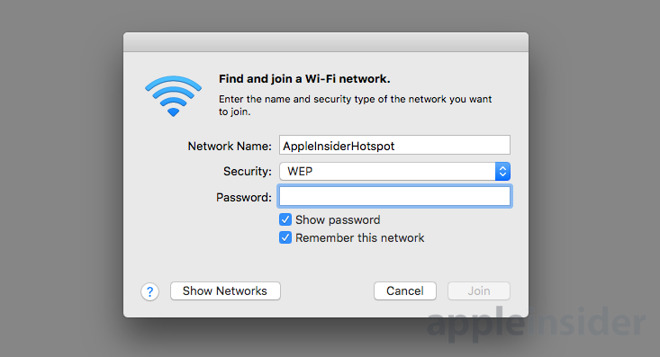
In most cases, people can find out their Wi-Fi network's password quite easily, especially in the case of home routers which allow for the password to be changed through a software interface, or for some routers from Internet providers, printed on the side of the networking device. In a workplace, it could be as simple as asking technical support staff.
There are, however, situations where it is not possible to do any of these. For example, if you want to make a note of a distant Wi-Fi access point's password, so you can easily add another device to the Wi-Fi network at a later time.
One way to find out a saved Wi-Fi password is to search within the Keychain, as it is used to hold Wi-Fi passwords alongside other sensitive data. This guide covers how to look inside the keychain that specific password.
If you know the name of the Wi-Fi network, select Passwords under Category then click the search box and start to type in the network name until it appears on the main list. Depending on your Mac's setup, it may appear under both the System and iCloud keychains, so it could be worth looking in both listings in case there's a difference.
Double click the result you're interested in to bring up more details. Click the tickbox next to Show Password to bring up an authentication box, in which you need to enter your password and click OK.
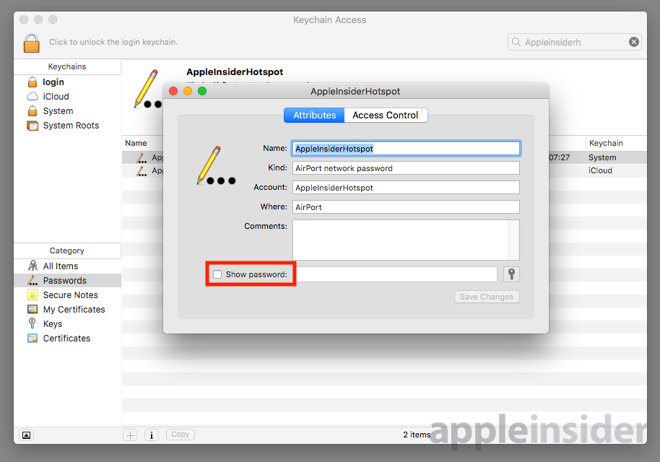
In some cases, such as accessing the details in the System keychain, an extra authentication box will appear asking for the user name and password for an administrator. Again, enter the required user name and password details, and click Allow.
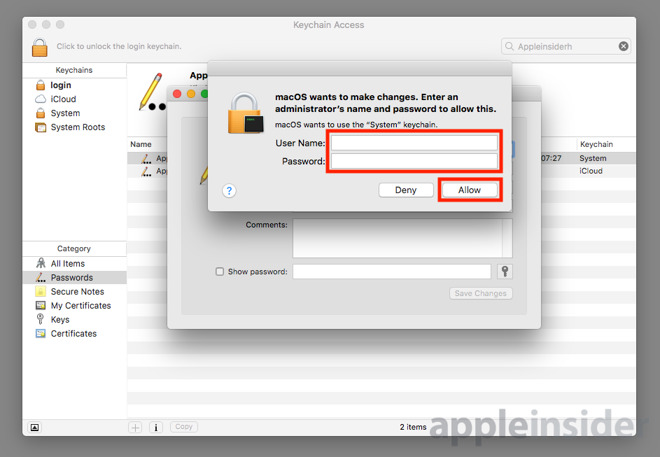
You will be returned to the Wi-Fi network's listing, with the password visible in its textbox.
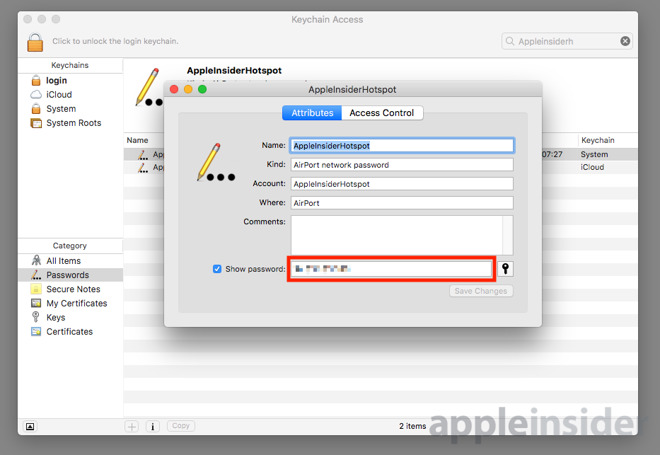
Bring up Keychain Access as before, make sure Passwords is selected as the Category, and instead of searching for the name, type "airport n" into the search box. KeyChain will bring up a list of all Wi-Fi networks the Mac has previously accessed, including the last time it was modified.
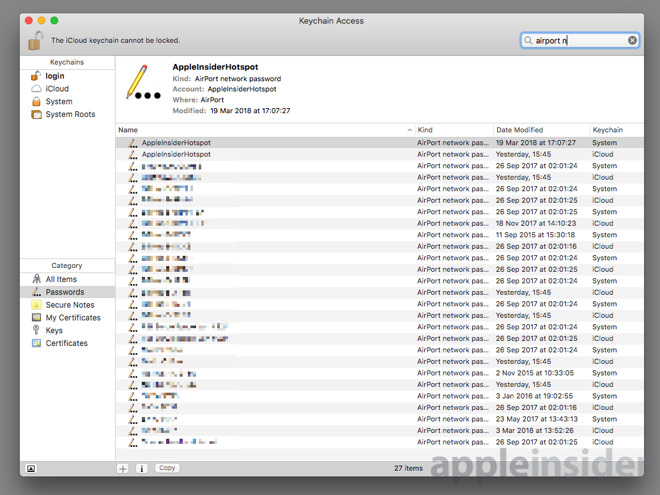
Peruse the list to see if a name jogs your memory or seems like the most plausible one, then continue as above for discovering the password.
If both System and iCloud keychains provide results for a Wi-Fi hotspot name, and you own multiple macOS or iOS devices under the same iCloud account, err towards checking the iCloud keychain first. As iCloud synchronizes the details across all devices under your control, if the password for the network has recently changed and it has been altered on another of your devices first, the iCloud version will be correct while the local version is incorrect.
At the point when the password is visible, it is also possible to update it if it is incorrect. Simply type in the new password and click the activated Save Changes button.
Lastly, if you are looking up the password in order to provide it to another person, there are other ways to provide the details. Both High Sierra and iOS 11 include a facility to share the password with a nearby and trusted guest device, without needing to remember it or type the password in.

In most cases, people can find out their Wi-Fi network's password quite easily, especially in the case of home routers which allow for the password to be changed through a software interface, or for some routers from Internet providers, printed on the side of the networking device. In a workplace, it could be as simple as asking technical support staff.
There are, however, situations where it is not possible to do any of these. For example, if you want to make a note of a distant Wi-Fi access point's password, so you can easily add another device to the Wi-Fi network at a later time.
One way to find out a saved Wi-Fi password is to search within the Keychain, as it is used to hold Wi-Fi passwords alongside other sensitive data. This guide covers how to look inside the keychain that specific password.
Searching by Wi-Fi network name
To manually look inside the keychain, you need the KeyChain Access application, which is available within the Utilities folder of the Applications folder. It can also be found by using the search bar in Finder for the term "Keychain Access" and defining the search to take place across This Mac.If you know the name of the Wi-Fi network, select Passwords under Category then click the search box and start to type in the network name until it appears on the main list. Depending on your Mac's setup, it may appear under both the System and iCloud keychains, so it could be worth looking in both listings in case there's a difference.
Double click the result you're interested in to bring up more details. Click the tickbox next to Show Password to bring up an authentication box, in which you need to enter your password and click OK.

In some cases, such as accessing the details in the System keychain, an extra authentication box will appear asking for the user name and password for an administrator. Again, enter the required user name and password details, and click Allow.

You will be returned to the Wi-Fi network's listing, with the password visible in its textbox.

General searches
If you're not entirely sure what the Wi-Fi network name is, but you are certain the Mac has accessed it in the past, it is still possible to find out the probable password.Bring up Keychain Access as before, make sure Passwords is selected as the Category, and instead of searching for the name, type "airport n" into the search box. KeyChain will bring up a list of all Wi-Fi networks the Mac has previously accessed, including the last time it was modified.

Peruse the list to see if a name jogs your memory or seems like the most plausible one, then continue as above for discovering the password.
Further Notes
While this is useful for rediscovering forgotten Wi-Fi passwords (and any other password stored in the Keychain), it is only useful if the Wi-Fi network in question has previously been accessed.If both System and iCloud keychains provide results for a Wi-Fi hotspot name, and you own multiple macOS or iOS devices under the same iCloud account, err towards checking the iCloud keychain first. As iCloud synchronizes the details across all devices under your control, if the password for the network has recently changed and it has been altered on another of your devices first, the iCloud version will be correct while the local version is incorrect.
At the point when the password is visible, it is also possible to update it if it is incorrect. Simply type in the new password and click the activated Save Changes button.
Lastly, if you are looking up the password in order to provide it to another person, there are other ways to provide the details. Both High Sierra and iOS 11 include a facility to share the password with a nearby and trusted guest device, without needing to remember it or type the password in.

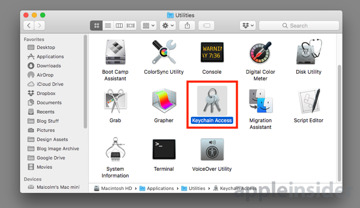
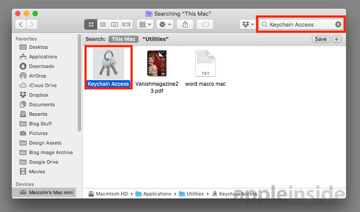
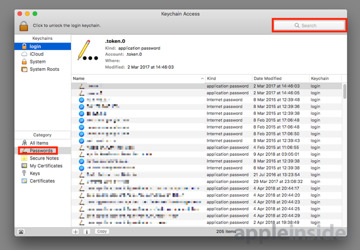
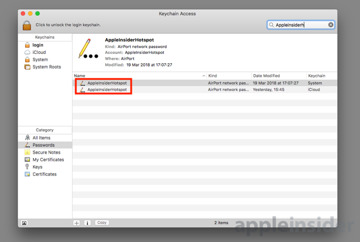
Comments
latest version of macOS/iOS will automatically offer up sharing a wifi password to other users attempting to login to secure wifi if they are within bluetooth range.
erase your hard disk completely, and do an internet restore , and it will connect to your wifi!! and if you do a pram reset, it will then ask you for the login credentials because
they were erased!!!
as far as mongo bongos reply goes. need more info. maybe youre talking about the hash????
when you connect to a wifi network , its not really the password that connects you to the wifi network. its the mathematical hash of the wifi password combined with your network name (ssid ) . for example, a wifi network name of appleinsider, and a password " appleinsiderpassword ", generates a hash of " e70f772ac2efd170dc485b19f19ac9a237cdbfbdc816a402fd5a3d9b08a94c52 " and its that hexicimal string that actually connects you to the wifi network.
this is why you don't use common SSID names like "NETGEAR" because those hash tables are available or download
the hash as i call it, is actually called the PRE SHARED KEY. the preshared key can be used as the password. if someone asks you for your wifi password, give them the key instead. and it will work. i use PSKs all the time, because it saves me from typing special characters
Your statement is still valid, and something I doubt 99.9% of us consider when selling old hardware. Secure-delete your partition, Internet Recover, and reset your SMC and PRAM (just to be safe). That said, my wifi password is not even remotely like any of the other passwords used in my family so I'm not too concerned if it is somehow found out, and the likelihood of some future owner of my hardware driving by my neighborhood to connect to my wifi is pretty slim.